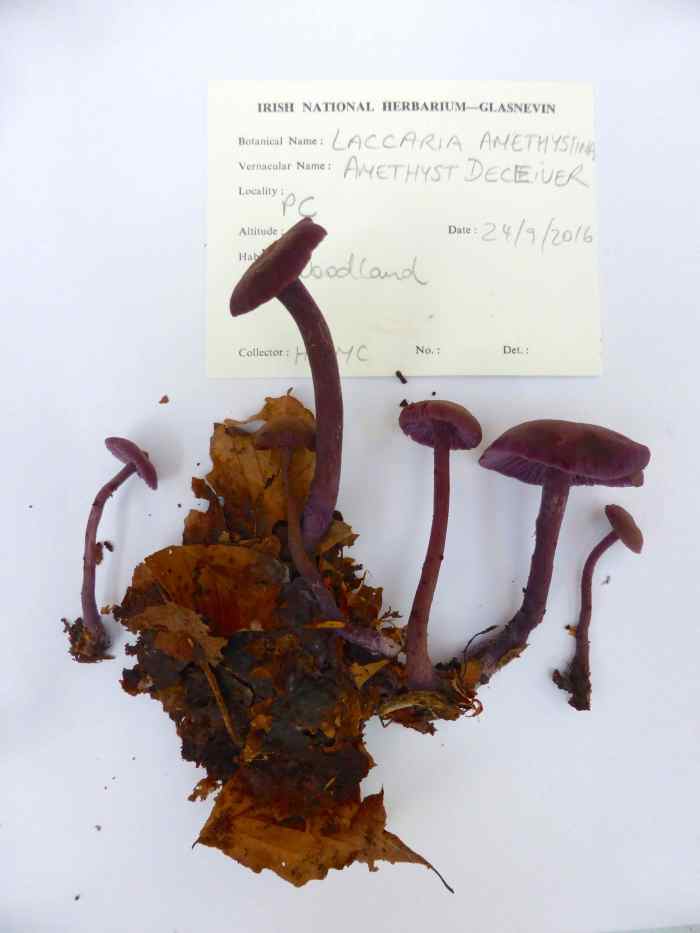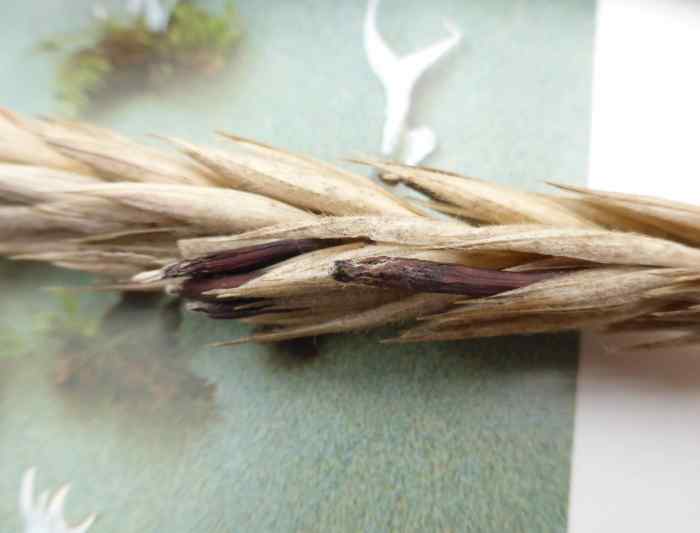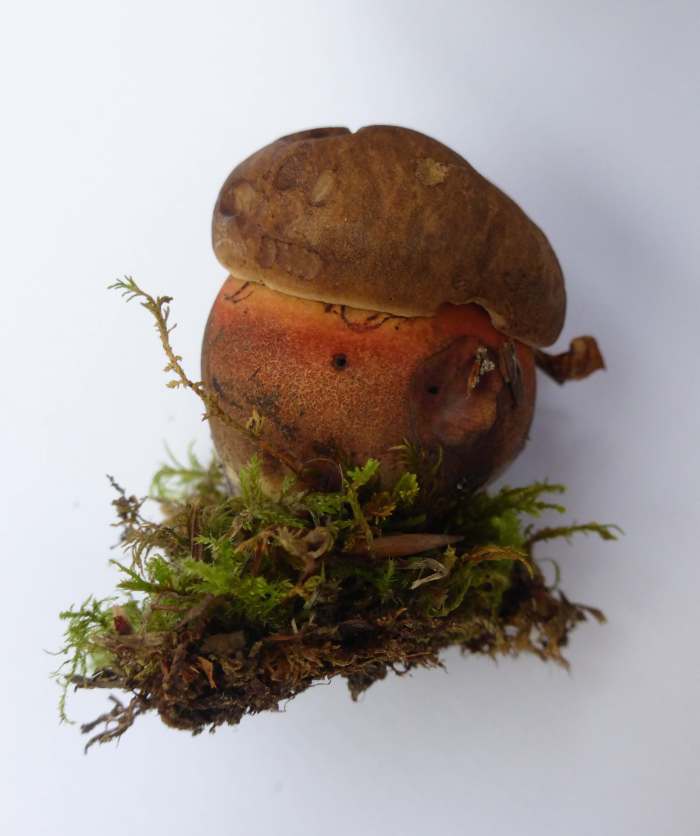Death Cap, Destroying Angel, Amethyst Deceiver, Panther Cap, Barefoot Amanita, Charcoal Eyelash, Yellow Fairy Cup, Devil’s Bolete, Witches’ Butter… The exotic “common” names for Irish and British species read like a spell book. A catalogue of human suspicions and accusations, promises of seduction and plenty.
I heard some of these names for the first time at an exhibition of Irish fungi at the National Botanic Gardens in September. As mycologists Maria Cullen and Howard Fox regaled us members of the Dublin Naturalists’ Field Club with bizarre facts and folklore, mushroom foraging began to sound like Russian roulette, or meddling with the occult.

We are right to be somewhat wary of fungi. A representative from the Poisons Information Centre, invited by Maria and Howard, spoke to us of an Asian expatriate who mistook our Death Cap for the edible Paddy Straw Mushroom, used frequently in Asian cuisine. The result was a liver transplant, but could have been much worse.
A fungus has even been accused of triggering the Salem witch trials. Claviceps purpurea (Fr.), or Ergot, grows on grains such as rye, a staple food source in Salem at the time of the “witchcraft” outbreak. Ergot contains ergotamine, related to LSD, the consumption of which can cause a burning sensation from nerve damage in the limbs (known as St. Anthony’s Fire), psychotic behaviour, convulsions and hallucinations – all symptoms recorded in the unfortunate Salem “witches”.

This theory was first proposed by a psychology major, called Linnda Caporael, who found that there was plenty of warm, damp weather around Salem in 1691. Perfect conditions for the fungus to thrive. You can read more about it in this article taken from the very reliable-sounding Uncle John’s Heavy Duty Bathroom Reader.
Maria Cullen suggested that the women might have been the first to develop the symptoms because they scoffed a sneaky rye scone before the men got home for dinner. And who is going to eat leftover rye scones baked by a witch? Yet she was quick to assure us before we left that fungi are not out to get us. The main reason they possess such powerful toxins is so they can break down the cellulose in the organic matter they consume.
Indeed, many fungi could be considered friends, providing antibiotics, dyes, delicious risotto and many more products that we use. Even Ergot has gone some way to redeeming itself, as a treatment for migraines.
Doting on a roundy little dumpling of a Boletus mushroom, I wonder if a mushroom would feel bad if it knew it had poisoned someone, letting my anthropomorphantasies get entirely carried away. Then Maria tells me that some similar species contain tubes that lure tiny insects in and valves that stop them from ever getting out again, and I wonder…

Moral of the story: Just like in the human world, there are harmful mushrooms and helpful mushrooms, but they’re all just trying to get along in life and digest their environment.
To really get to know your mushrooms, I recommend getting your fungi foraging fingers on a copy of Mushrooms and Other Fungi of Great Britain and Europe by Roger Phillips and Lyndsay Shearer (Pan Books, 1981).
Great post as well…Just one thing…You didn’t say ‘morel of the story’
LikeLike
Bahaha!!! I really wish I had! 😀
LikeLike